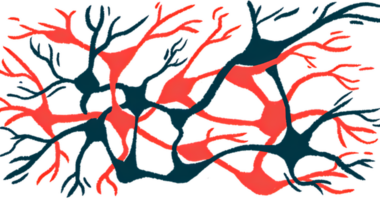Exercise eases ferroptosis to aid Parkinson’s neurological function
Findings show role of iron-mediated cell death in disease progression

Physical exercise eased signs of a type of iron-mediated cell death called ferroptosis in microglia and improved neurological function in mouse models of Parkinson’s disease, a study finds.
Microglia are a type of nervous system support cell that’s believed to be important in the neurodegenerative disease. When ferroptosis was reduced, the microglia showed an enhanced ability to engulf and clear alpha-synuclein, the protein that accumulates to toxic levels in Parkinson’s.
The benefits of exercise appeared to be related to an increase in the SLC7A11 protein, which then suppressed ALOX12, a ferroptosis-associated enzyme.
Altogether, the findings “underscore the critical role of microglial ferroptosis in the pathological progression of [Parkinson’s disease],” the researchers wrote, adding they also support physical exercise “as a promising rehabilitation therapy and cost-effective strategy to slow the progression of neurodegeneration and ease caregivers’ burden.”
The study, “Voluntary exercise alleviates neural functional deficits in Parkinson’s disease mice by inhibiting microglial ferroptosis via SLC7A11/ALOX12 axis,” was published in npj Parkinson’s disease.
Parkinson’s disease features the progressive loss of dopaminergic neurons, the nerve cells that release dopamine, a brain signaling chemical. A key hallmark of the disease is the alpha-synuclein protein accumulating in the brain, which eventually becomes toxic to nerve cells, leading to their dysfunction and death.
Problems in microglia, the brain’s resident immune cells, might contribute to disease processes. Microglia are particularly susceptible to a type of iron-dependent cell death called ferroptosis that’s been implicated in Parkinson’s. Microglia undergoing ferroptosis may be impaired in their usual ability to engulf and remove cellular debris and other unnecessary or potentially harmful substances, a process called phagocytosis, which may enable alpha-synuclein’s buildup.
Effects of exercise on iron-mediated cell death
Numerous studies involving Parkinson’s patients and mouse models show that physical exercise improves neurological function and reduces alpha-synuclein’s accumulation. How it does so remains unclear, but some studies have shown that exercise may modulate microglial function.
Here, researchers explored the effects of exercise on microglia ferroptosis in mouse models of Parkinson’s.
In a toxin-induced model of Parkinson’s, two months of voluntary exercise on a running wheel was associated with cognitive and motor improvements, reductions in alpha-synuclein accumulation, and preservation of dopaminergic neurons. It also appeared to enhance microglia’s ability to phagocytose alpha-synuclein and partially reversed cellular signs of ferroptosis.
Notably, activity of the ferroptosis-related gene called ALOX12, which has been previously linked to Parkinson’s, was reduced with physical exercise. Its protein product, ALOX12, was decreased in microglia.
To further explore the role of ALOX12, the scientists turned to a genetic mouse model of Parkinson’s. They found that genetically manipulating the mice to reduce ALOX12’s activity in microglia alleviated motor and cognitive problems and eased signs of ferroptosis. Increasing ALOX12 activity exacerbated ferroptosis.
Physical exercise was associated with similar benefits in this mouse model as in the previous one. But when ALOX12’s activity was increased, the positive effects of exercise were weakened, indicating the “inhibition of ALOX12 partly accounts for exercise-induced alleviation of neurological function deficits and microglial ferroptosis,” the researchers wrote.
Further experiments showed this inhibition of ALOX12 was mediated by a protein called SLC7A11, whose levels were increased with voluntary exercise.
“Our findings indicate that voluntary exercise is an effective therapeutic approach for inhibiting microglial ferroptosis, reducing [alpha-synuclein] deposition, and alleviating neurological function deficits in [Parkinson’s disease],” wrote the researchers, who noted, however, that “the program of exercise is critical.” Voluntary, rather than forced, exercise is more accessible and less stressful for many people.
“Future studies should investigate the role of specific forced exercise programs in alleviating microglial ferroptosis in [Parkinson’s] mice and explore the optimal protocols for the clinical rehabilitation of [Parkinson’s] patients,” they wrote.







